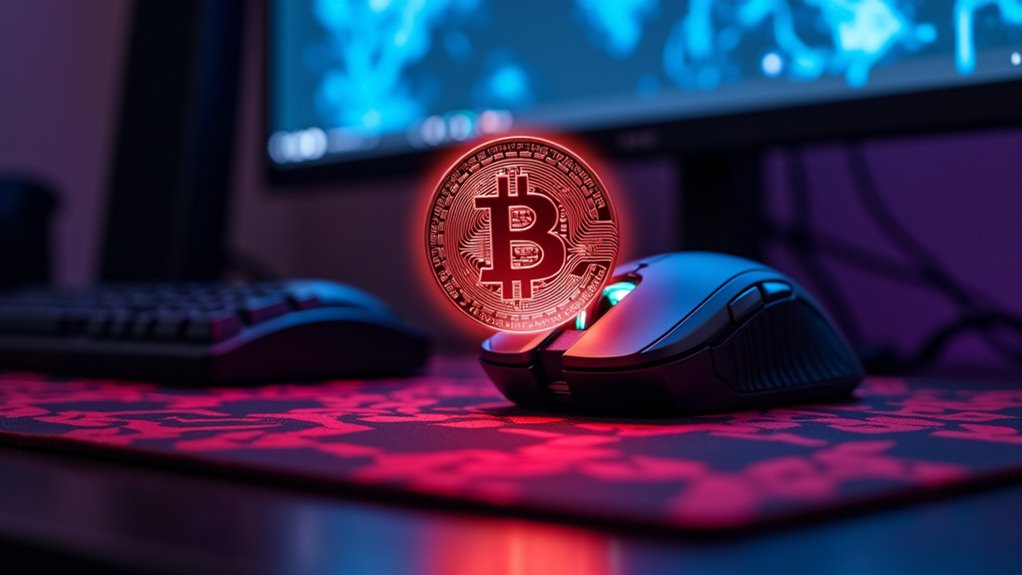Cryptocurrency value emerges from a wild tangle factors. Supply and demand fundamentals create the baseline, while emotional trading drives the daily rollercoaster. Technical upgrades boost confidence, but bugs and hacks can torpedo prices overnight. Market whales splash around, causing ripple effects through the entire crypto ocean. Global economic chaos, regulation changes, and media hype all stir the pot. The crypto market never sleeps – and neither do the forces shaping its value.

The roller coaster terrain of cryptocurrency value rarely follows a predictable trajectory. Like a complex dance between bulls and bears, crypto prices surge and plummet based on fundamental market forces – supply and demand. When supply gets tight and people want in, prices shoot up. When nobody’s buying or tokens flood the market, prices tank. It’s really that simple. Well, sort of. With a fixed supply of 21M, Bitcoin remains uniquely positioned to maintain long-term value potential.
The crypto market dances to its own rhythm, where supply and demand conduct an unpredictable waltz of price swings.
Market sentiment throws logic out the window sometimes. Fear and greed run the show, sending prices on wild rides that make stock market volatility look tame. Whale investors – those crypto fat cats with massive holdings – can trigger market-wide panic or euphoria with a single massive trade. And don’t even get started on the Fear & Greed Index; it’s like a mood ring for the entire crypto market. Many trading platforms implement security solutions to protect against malicious attacks that could affect market stability.
Regulators love to crash the party too. One stern word from the SEC can send prices tumbling faster than a house of cards in a hurricane. But when governments play nice? To the moon! Speaking of which, technology keeps pushing boundaries. New upgrades, better security, faster transactions – these innovations attract fresh money like moths to a flame. Just pray there aren’t any hacks or bugs lurking in the code. By 2140, mining rewards will shift entirely to transaction fees, potentially affecting Bitcoin’s ecosystem.
Network performance matters big time. Slow transactions and high fees? Users bail. But smooth sailing and low costs keep them coming back for more. Meanwhile, rival cryptocurrencies duke it out for supremacy, stealing each other’s thunder – and market share. One project’s breakthrough becomes another’s nightmare.
The macro picture adds another layer of chaos. Global economic meltdowns, inflation fears, bank failures – they all push and pull crypto values like cosmic forces. Remember FTX? That disaster sent shockwaves through the entire crypto universe. And let’s not forget the media circus – one viral headline can spark a buying frenzy or trigger a mass exodus. In this wild west of digital assets, value comes from a perfect storm of factors, some logical, others purely emotional. Welcome to crypto, where the only constant is change.
Frequently Asked Questions
What Happens to Cryptocurrency if the Internet Goes Down Globally?
Global internet failure would effectively halt cryptocurrency trading and transactions. The blockchain network would cease operations, preventing access to digital assets until connectivity is restored, potentially causing major/substantial/considerable market disruption upon recovery.
Can Governments Completely Ban Cryptocurrencies From Being Traded?
While governments can enact rigorous regulations and prohibitions, completely impeding cryptocurrency trading is arduous owing to its decentralized nature, worldwide accessibility, and technological versatility. Clandestine trading frequently endures notwithstanding constraints.
How Do Hardware Wallets Protect Crypto Assets During Market Crashes?
Hardware wallets protect crypto assets during market crashes by storing private keys away from the internet, preventing exposure to exchange failures, maintaining self-custody control, and ensuring assets remain accessible regardless of market conditions or platform instability.
What Role Do Celebrity Endorsements Play in Cryptocurrency Price Movements?
Celebrity endorsements trigger rapid price movements through social media influence and emotional trading. They can create short-term surges but often lack sustainable impact, potentially exposing investors to heightened volatility and speculative hazards.
How Do Quantum Computers Potentially Threaten Cryptocurrency Security?
Quantum computers could potentially break the cryptographic systems protecting cryptocurrencies by deriving private keys from public keys, enabling unauthorized access to funds and compromising blockchain security through advanced computational capabilities and algorithms.









